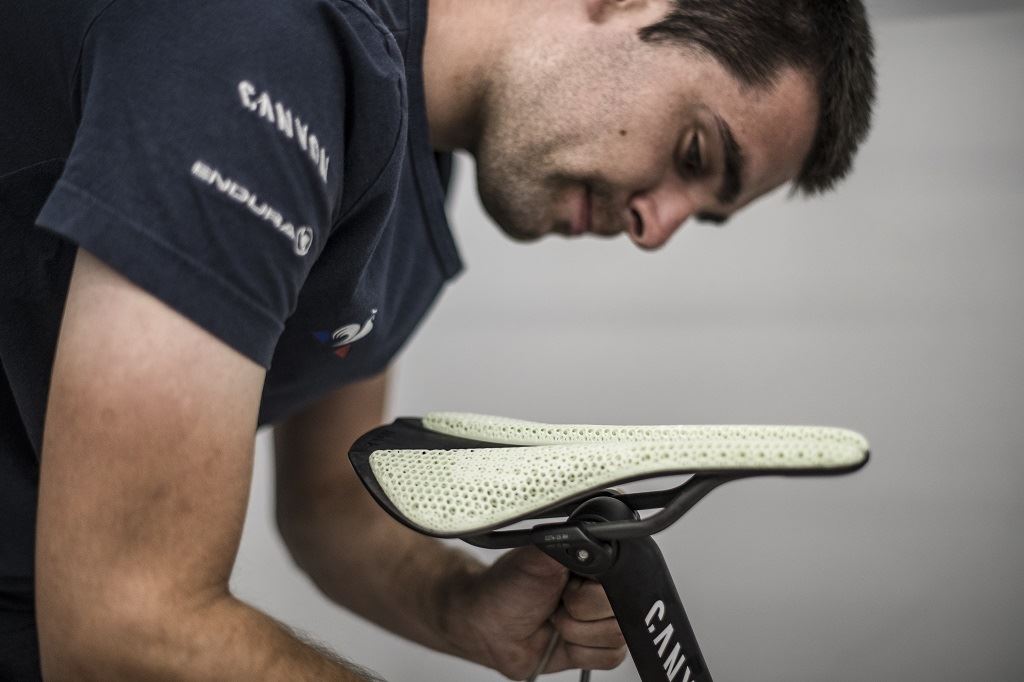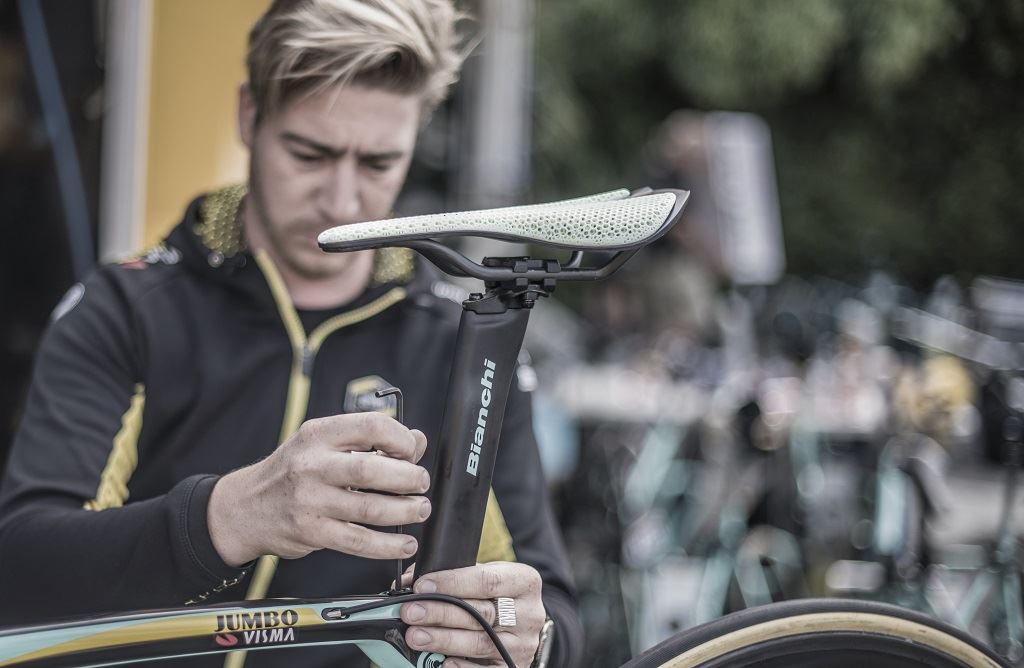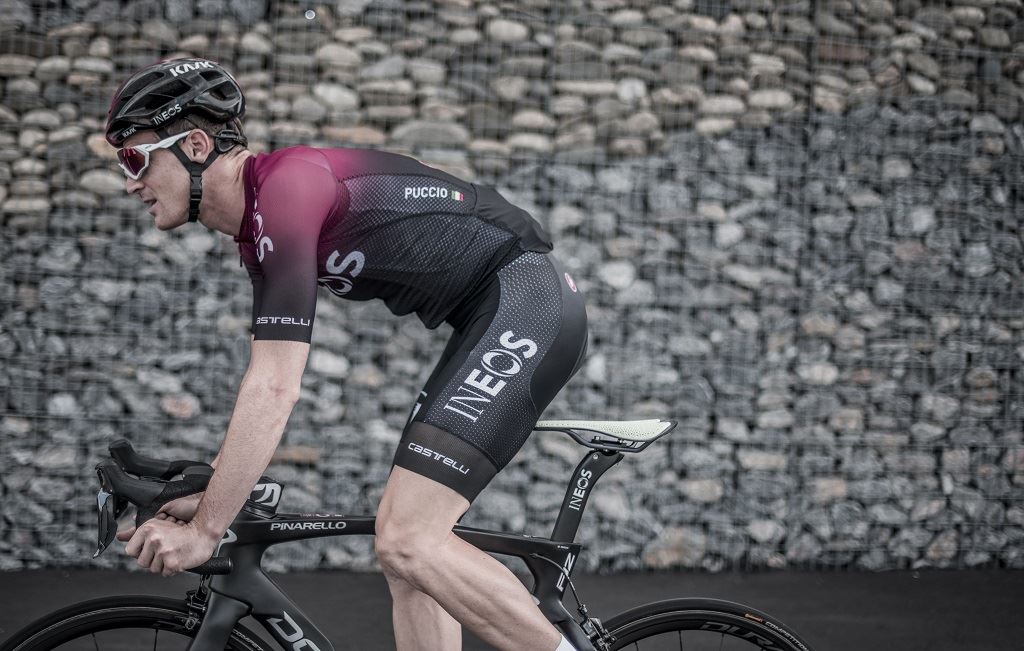![A cyclist on a fizik bicycle with an Adaptive seat [Image: Carbon]](https://fabbaloo.com/wp-content/uploads/2020/05/fizik-ADAPTIVE-15a_img_5eb09111438b8.jpg) A cyclist on a fizik bicycle with an Adaptive seat [Image: Carbon]
A cyclist on a fizik bicycle with an Adaptive seat [Image: Carbon]
DLS 3D printing stays sporty with another collaborative creation for cyclists.
Carbon and fizik have announced a partnership to create the latter’s first digitally manufactured bicycle saddle — and Carbon’s second, on the heels of last week’s introduction with Specialized.
Adaptive
![The fizik Adaptive saddle created with DLS [Image: Carbon]](https://fabbaloo.com/wp-content/uploads/2020/05/Fizik_Adaptive_EMOTIONAL_03a_img_5eb091117a18c.jpg) The fizik Adaptive saddle created with DLS [Image: Carbon]
The fizik Adaptive saddle created with DLS [Image: Carbon]
The bike saddle is called Adaptive, which fizik describes as “a new range of performance cycling saddles offering seamlessly engineered zonal cushioning, support and power transfer properties.”
Who wouldn’t want zonal cushioning as part of their cycling experience?
The creation falls under fizik’s cross-disciplinary Concepts initiative to bring more high performance, advanced technologies to its innovations for cyclists through industry and academic collaboration.
Innovation doesn’t come cheap, nor does high-end cycling; as with Specialized, the price range for fizik’s saddles is commensurate with the professional market. Road cycling saddles from fizik, the category that includes the new Adaptive, are priced between about €99-350. For now, Adaptive is simply labelled as “coming soon” with no pricing nor specific timeline specified; presumably it will fall under the relatively higher priced products.
The Tech Behind The Seat


There’s a lot of technology in Adaptive.
The new saddle is based on the Versus Evo 00 platform, described as “a fully carbon fiber performance racing saddle that delivers power transfer and light weight in a full channel design that offers soft tissue pressure relief.” It is also a step toward a potentially more adaptive future for later-generation Adaptive designs that may be fully personalized using consumers’ data gathered in-store to create individual pressure maps.
For now, the pressure mapping data is broader, with nine years’ worth of professional cyclists’ data used to create this initial design.
“Digital Light Synthesis unlocks a new era in saddle design and manufacturing, driven by athlete data and agile manufacturing processes. It means we can fully release our creativity — transforming not just what we make, but how we make it, bringing a whole new way of thinking to cycling saddles. Our aim is to provide riders with bespoke performance products tailored to their individual biodynamic data,” said fizik Brand Director Luca Mathia Bertoncello.
The saddle, presumably also designed for production on Carbon’s large L1 3D printer, features lattice-style padding using EPU 41 material, as seen with the Specialized saddle. The flexible, strong material is proving its viability in these sporty applications that require attention to athletic needs like power transfer, shock absorption, stability, and comfort.
“fizik used the Carbon Lattice Engine to match optimized response profiles based on rider feedback and create a digitally tuned lattice geometry for the Adaptive — enabling differentiation based on their unique product vision and design,” noted Erika Berg, Head of Application Development at Carbon.
Carbon’s dedication to increasingly personalized sporting goods is apparent, as is the scale at which such products are being made. While bike saddles and helmets remain something of a niche, the company’s first foray into mass-produced athletic wear remains a shining testament to a broadly appealing product line that proves out the viability of 3D printing in a scale manufacturing environment.

